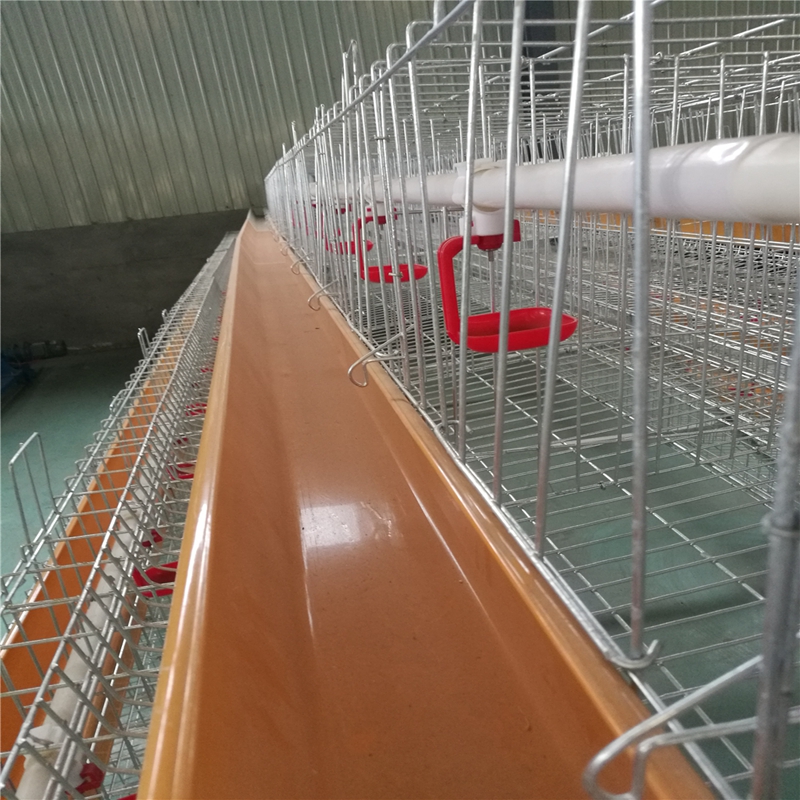layer chicken battery cage
Dec . 25, 2024 02:30 Back to list
layer chicken battery cage
The Layer Chicken Battery Cage A Controversial Approach to Egg Production
The layer chicken battery cage system has become a significant and contentious topic in the agricultural and animal welfare sectors. This method of poultry farming is primarily designed for egg production, where hens are kept in small, confined cages that restrict their movement. While this approach maximizes efficiency and output, it raises serious ethical, environmental, and health concerns that warrant a closer examination.
The Design and Functionality
Battery cages are typically stacked in rows within large poultry houses, allowing for high-density housing of hens. Each cage usually holds multiple birds, often providing them with only about 67 to 116 square inches of space—an area smaller than a standard sheet of paper for each hen. This confinement is intended to enable easy management, feeding, and egg collection. The cages are designed to keep hens in a controlled environment, which can reduce the incidence of diseases and make feeding procedures more efficient.
Economic Advantages
One of the primary reasons for the widespread use of battery cages is the economic efficiency they offer. Producers can maximize output by keeping a large number of hens in a relatively small area. This efficiency translates to lower production costs and, in turn, lower prices for consumers. The increase in egg production is significant; hens can produce eggs almost daily when in optimal conditions. This high yield appeals to both producers and consumers, fostering an environment where battery cage systems are often favored.
Animal Welfare Concerns
However, the animal welfare implications of battery cages cannot be overlooked. Critics argue that this system compromises the overall well-being of hens by denying them basic freedoms. The confinement restricts their ability to engage in natural behaviors such as nesting, scratching, and roosting. Studies have shown that hens kept in battery cages experience higher levels of stress and are more prone to health issues, including osteoporosis and feather pecking.
layer chicken battery cage

In recent years, there has been a growing movement advocating for alternatives to battery cages. Many consumers are now demanding eggs from free-range or cage-free systems, which allow hens more space and the ability to express their natural behaviors. This shift in consumer preference reflects a broader societal change towards animal welfare, resulting in several companies and agricultural producers reconsidering their practices.
Regulatory Changes
In response to public pressure and welfare concerns, several countries and states have enacted or proposed legislation to phase out battery cages. For instance, the European Union has mandated the elimination of conventional battery cages in favor of enriched cages or alternative housing systems. Similarly, various states in the United States have begun implementing stricter regulations on the use of battery cages, signaling a trend towards more humane farming practices.
Environmental Impact
Beyond animal welfare, battery cages also have implications for the environment. The high concentration of hens in confined spaces can lead to significant waste management issues. Manure accumulation, if not properly managed, can result in soil and water pollution. The environmental footprint of intensive egg production systems is a factor that is increasingly being scrutinized as consumers and policymakers seek sustainable solutions in agriculture.
Conclusion
The layer chicken battery cage system epitomizes the complex relationship between agricultural productivity and ethical considerations in animal husbandry. While it offers clear economic benefits and efficiencies in egg production, it raises invaluable questions about animal welfare and environmental sustainability. As society continues to evolve in its understanding of these issues, the future of egg production may witness a significant transformation towards more humane and sustainable practices. The call for change is becoming louder, and it remains to be seen how producers and consumers will respond to this pressing issue in the years to come.
-
Automatic Feeding Line System-Pan Feeder Nipple Drinker|Anping County Yize Metal Products Co., Ltd.
NewsJul.29,2025
-
Hot Sale 24 & 18 Door Rabbit Cages - Premium Breeding Solutions
NewsJul.25,2025
-
Automatic Feeding Line System Pan Feeder Nipple Drinker - Anping County Yize Metal Products Co., Ltd.
NewsJul.21,2025
-
Automatic Feeding Line System Pan Feeder Nipple Drinker - Anping County Yize Metal Products Co., Ltd.
NewsJul.21,2025
-
Automatic Feeding Line System - Anping Yize | Precision & Nipple
NewsJul.21,2025
-
Automatic Feeding Line System - Anping Yize | Precision & Nipple
NewsJul.21,2025






